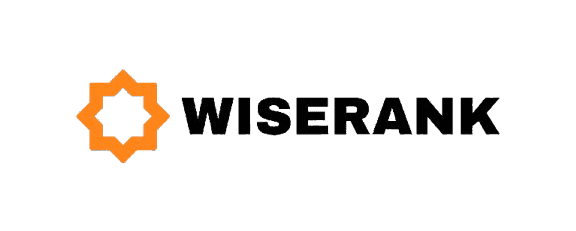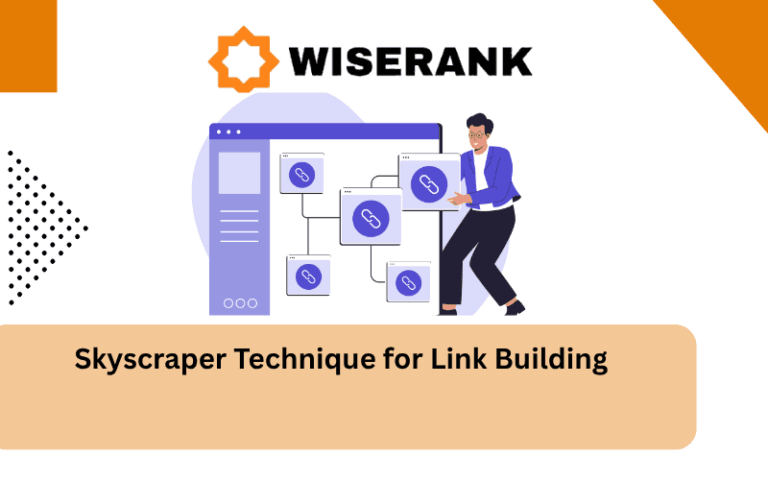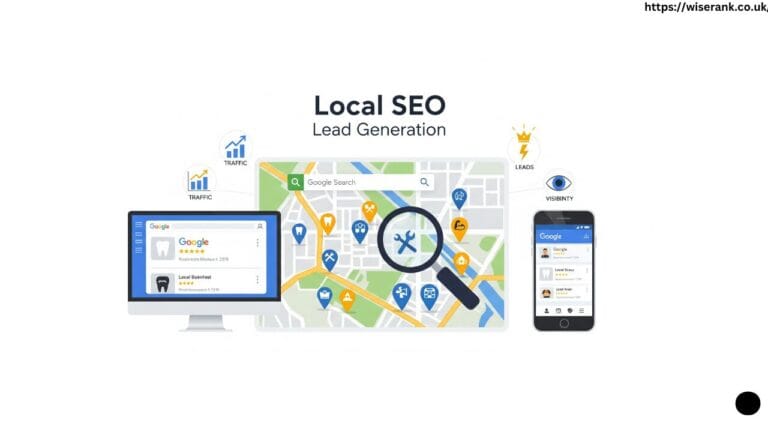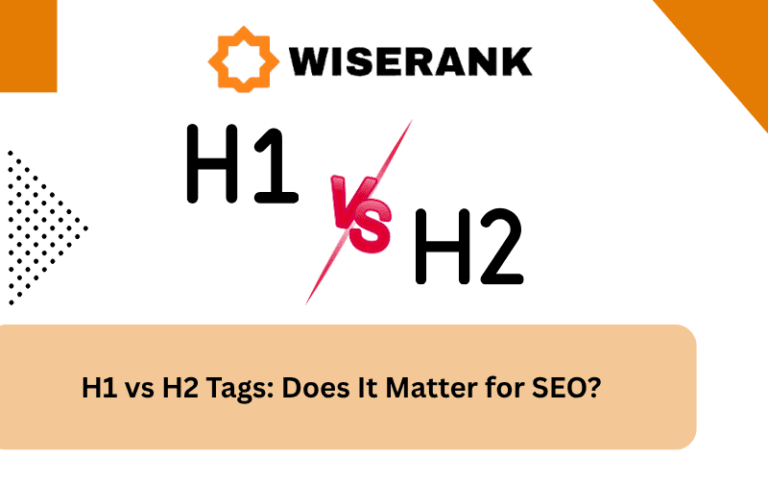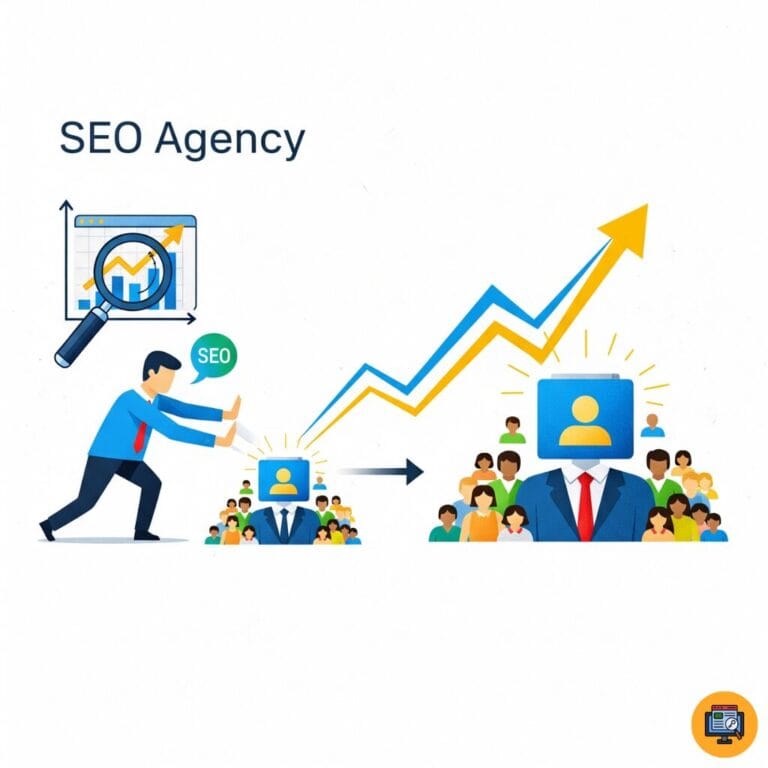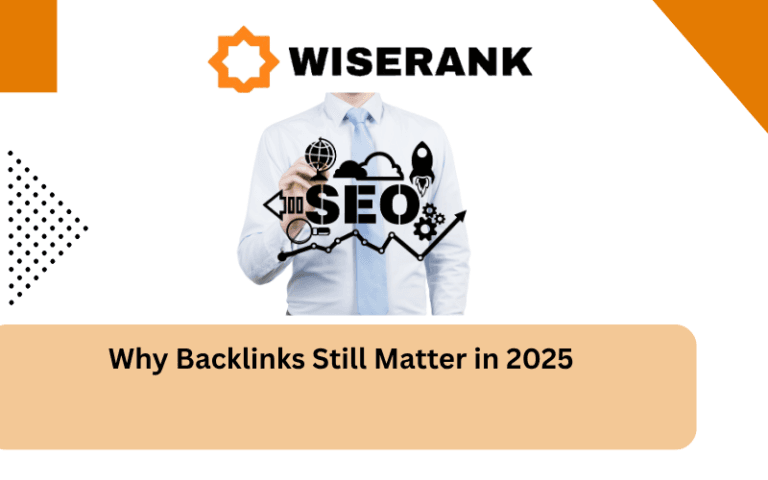Introduction
On-page SEO is the foundation of every successful digital marketing strategy. It’s the practice of optimizing individual web pages to rank higher in search engines and earn more relevant traffic. Unlike off-page SEO, which focuses on external signals like backlinks, on-page SEO puts you in complete control of your content, structure, and user experience.
Whether you’re a blogger, e-commerce store owner, or marketing professional, understanding on-page SEO is essential. Search engines like Google use hundreds of ranking factors, and many of them are directly tied to how well you optimize your pages. From title tags and meta descriptions to content quality and internal linking, every element plays a role in determining your visibility.
In this comprehensive guide, we’ll break down everything you need to know about on-page SEO. You’ll learn the core components, best practices, common mistakes, and advanced strategies to help your content rank higher and convert better. Let’s dive in.
What Is On-Page SEO?
On-page SEO, also known as on-site SEO, refers to the optimization techniques applied directly to your website’s pages to improve their search engine rankings. It involves optimizing both the content and the HTML source code of a page, making it easier for search engines to understand and rank your content.
The goal is simple: help search engines understand what your page is about and convince them that it deserves to rank for relevant queries. At the same time, on-page SEO ensures that users have a positive experience when they visit your site.
Why Is On-Page SEO Important?
On-page SEO is critical because it tells Google and other search engines what your content is about. Without proper optimization, even the best content can go unnoticed. Here’s why it matters:
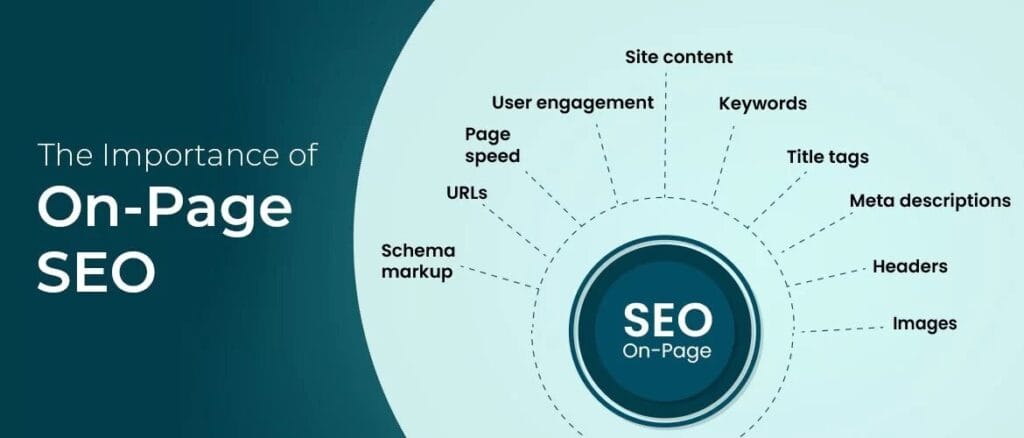
- Improves Search Rankings: Proper optimization helps search engines understand your content, leading to better rankings.
- Increases Organic Traffic: Higher rankings mean more visibility, which translates to more clicks and visitors.
- Enhances User Experience: On-page SEO focuses on user-friendly elements like fast loading times, mobile responsiveness, and clear navigation.
- Boosts Conversions: When users find exactly what they’re looking for, they’re more likely to take action.
Understanding On-Page SEO and Off-Page is crucial for building a holistic SEO strategy that covers both internal optimization and external authority building.
Core Elements of On-Page SEO
On-page SEO involves multiple components working together. Let’s explore the most important elements you need to optimize.
1. Title Tags
Your title tag is one of the most important on-page SEO factors. It appears in search results as the clickable headline and tells both users and search engines what your page is about.
A well-optimized title tag should:
- Include your primary keyword near the beginning
- Be 50-60 characters long
- Be compelling enough to encourage clicks
- Accurately reflect the page content
For example, instead of “SEO Tips,” use “10 Proven SEO Tips to Rank Higher in 2025.” Learning how to write SEO-friendly title tags can dramatically improve your click-through rates and rankings.
2. Meta Descriptions
While meta descriptions don’t directly impact rankings, they significantly influence click-through rates. A compelling meta description acts as your page’s sales pitch in search results.
Best practices include:
- Keep it under 160 characters
- Include your target keyword naturally
- Add a clear call-to-action
- Make it unique for each page
Master the art of crafting meta descriptions that drive CTR to turn searchers into visitors.
3. Header Tags (H1, H2, H3)
Header tags structure your content and make it easier to read. They also help search engines understand your content hierarchy.
Your H1 tag should:
- Include your primary keyword
- Be used only once per page
- Clearly state what the page is about
H2 and H3 tags organize your content into sections and subsections. Many people wonder H1 vs H2 tags and the answer is yes, proper hierarchy improves both user experience and search engine understanding.
4. URL Structure
Clean, descriptive URLs help users and search engines understand your page content before even visiting it.
Good URL practices:
- Keep URLs short and readable
- Include your target keyword
- Use hyphens to separate words
- Avoid numbers, dates, and unnecessary parameters
Example: yoursite.com/on-page-seo-guide is better than yoursite.com/page?id=12345
5. Keyword Optimization
Keywords are the foundation of SEO, but how you use them matters more than ever. Modern SEO requires strategic placement and natural integration.
Focus on:
- Primary keyword in title, H1, first paragraph, and naturally throughout
- Secondary and related keywords sprinkled naturally
- Avoiding keyword stuffing
- Using semantic variations
Understanding keyword placement helps you optimize without over-optimization, which can harm your rankings.
6. Content Quality and Depth
High-quality content is the backbone of on-page SEO. Google’s algorithms are designed to reward content that provides genuine value to users.
Quality content should:
- Answer user questions comprehensively
- Be well-researched and accurate
- Include original insights or perspectives
- Be properly formatted for readability
- Include relevant examples and data
Many wonder about content length and word count, While there’s no magic number, comprehensive topics typically require longer content to cover all relevant aspects.
7. Image Optimization
Images enhance user experience but can slow down your site if not optimized properly. Proper image alt text optimization serves two purposes: accessibility for visually impaired users and additional ranking opportunities.
Image optimization includes:
- Compressing images for faster loading
- Using descriptive file names
- Adding descriptive alt text with keywords
- Choosing the right format (WebP, JPEG, PNG)
- Implementing lazy loading
8. Internal Linking
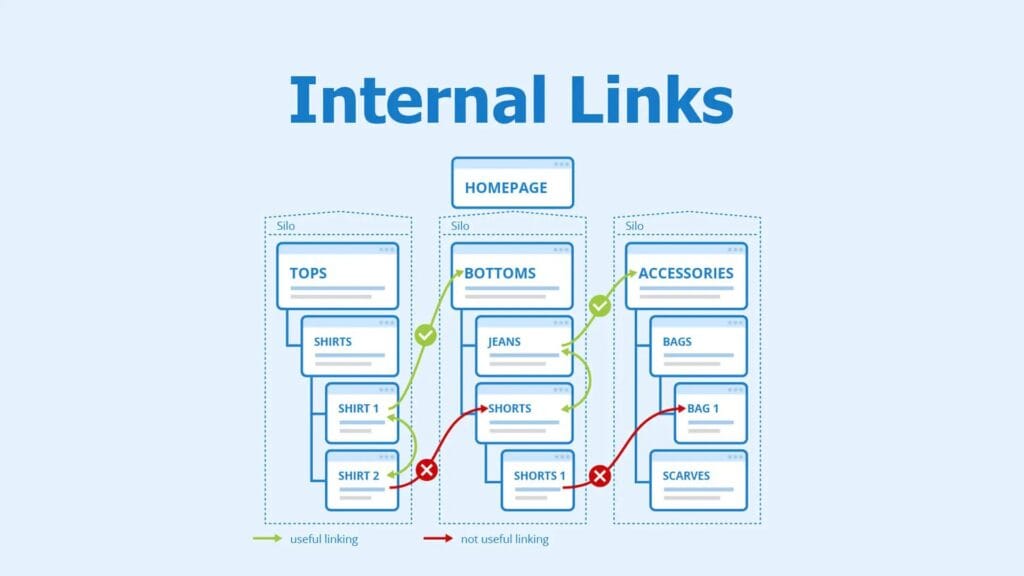
Internal links connect your content and help search engines discover and understand your site structure. An effective internal linking strategy distributes page authority throughout your site and keeps users engaged longer.
Benefits of internal linking:
- Helps search engines crawl your site
- Distributes link equity across pages
- Improves user navigation
- Establishes topical authority
- Reduces bounce rates
Link to related content naturally within your text using descriptive anchor text that tells users and search engines what they’ll find on the linked page.
9. External Links
While internal links connect your own pages, external links to authoritative sources add credibility to your content. They show that you’ve done research and support your claims with evidence.
Best practices:
- Link to reputable, authoritative sources
- Open external links in new tabs
- Use descriptive anchor text
- Ensure linked sources are relevant and current
Advanced On-Page SEO Techniques
Once you’ve mastered the basics, these advanced techniques can give you a competitive edge.
Semantic Search Optimization
Modern search engines understand context, not just keywords. They use natural language processing to understand user intent and content meaning.
To optimize for semantic search:
- Focus on topics, not just keywords
- Use related terms and synonyms naturally
- Answer related questions users might have
- Structure content logically
Learn how to optimize for semantic search to align with how search engines actually understand and rank content in 2025.
LSI Keywords and Related Terms
Latent Semantic Indexing (LSI) keywords are terms related to your main keyword. While Google doesn’t explicitly use “LSI keywords,” it does understand related concepts. Many still ask: do LSI keywords work? and the answer lies in natural, comprehensive content.
Instead of forcing related terms, write naturally about your topic and related concepts will appear organically.
Schema Markup
Schema markup is structured data that helps search engines understand your content better. It can earn you rich snippets in search results, improving visibility and click-through rates.
Common schema types:
- Article schema
- Product schema
- FAQ schema
- Review schema
- How-to schema
Page Experience and Core Web Vitals
Google’s page experience update made user experience a ranking factor. Understanding page experience and Core Web Vitals is essential for modern SEO success.
Core Web Vitals measure:
- Largest Contentful Paint (LCP): Loading performance
- First Input Delay (FID): Interactivity
- Cumulative Layout Shift (CLS): Visual stability
Optimize by:
- Improving server response times
- Optimizing images and videos
- Minimizing JavaScript
- Using a content delivery network (CDN)
Mobile Optimization
With mobile-first indexing, Google predominantly uses the mobile version of your site for ranking. Your mobile experience must be flawless.
Mobile optimization includes:
- Responsive design
- Fast loading times
- Easy navigation
- Readable text without zooming
- Touch-friendly buttons and links
On-Page SEO for Different Content Types
Different types of content require specific optimization approaches.

Blog Posts
Blog content should focus on providing value and answering questions. Follow blog post SEO best practices to maximize your content’s ranking potential:
- Research keywords thoroughly
- Write compelling introductions
- Use subheadings to break up content
- Include images and multimedia
- Add internal links to related posts
- Update content regularly
E-commerce Product Pages
Product pages have unique SEO requirements. Optimizing product pages for e-commerce SEO involves:
- Unique product descriptions
- High-quality product images
- Customer reviews
- Clear pricing and availability
- Schema markup for products
- Related product recommendations
Service Pages
Service pages should clearly explain what you offer and why customers should choose you:
- Describe services in detail
- Include location information for local SEO
- Add testimonials and case studies
- Create unique content for each service
- Include clear calls-to-action
On-Page SEO Checklist
Consistency is key in SEO. Use a comprehensive on-page SEO checklist to ensure you don’t miss critical optimization elements.
Essential checklist items:
- Keyword research completed
- Title tag optimized (50-60 characters)
- Meta description written (under 160 characters)
- H1 tag includes primary keyword
- URL is clean and descriptive
- Content is comprehensive and valuable
- Images optimized with alt text
- Internal links added to relevant pages
- External links to authoritative sources
- Mobile-friendly design
- Fast page loading speed
- Schema markup implemented
- Content proofread for errors
Regular audits using this checklist ensure consistent optimization across all pages while identifying opportunities for improvement.
Common On-Page SEO Mistakes to Avoid
Even experienced marketers make mistakes. Being aware of common on-page SEO mistakes helps you avoid setbacks:

Keyword Stuffing
Overusing keywords makes content unreadable and can result in penalties. Focus on natural language and user intent instead.
Thin Content
Pages with little valuable content rarely rank well. Aim for comprehensive coverage of your topic rather than superficial treatment.
Duplicate Content
Having identical or very similar content on multiple pages confuses search engines. Use canonical tags or 301 redirects to address duplicates.
Ignoring User Intent
Creating content that doesn’t match what users are actually looking for leads to high bounce rates and poor rankings. Always align content with search intent.
Neglecting Mobile Users
With most searches happening on mobile devices, a poor mobile experience will hurt your rankings significantly.
Slow Page Speed
Users abandon slow-loading pages. Compress images, minimize code, and use caching to improve speed.
Missing or Poor Meta Tags
Every page needs a unique, optimized title tag and meta description. Generic or missing meta tags waste ranking opportunities.
Measuring On-Page SEO Success
You can’t improve what you don’t measure. Track these metrics to evaluate your on-page SEO efforts:
Organic Traffic
Monitor overall organic traffic and traffic to specific pages using Google Analytics. Increasing traffic indicates successful optimization.
Keyword Rankings
Track your target keywords’ positions in search results. Tools like Google Search Console, SEMrush, or Ahrefs help monitor rankings.
Click-Through Rate (CTR)
A high CTR means your title tags and meta descriptions are compelling. Low CTR suggests they need improvement.
Bounce Rate
High bounce rates may indicate that your content doesn’t match user intent or that the user experience needs improvement.
Time on Page
Longer time on page usually means users find your content valuable and engaging.
Conversion Rate
Ultimately, SEO should drive business results. Track how well your optimized pages convert visitors into customers or leads.
On-Page SEO Tools
The right tools make optimization easier and more effective:
- Google Search Console: Monitor performance, identify issues, and submit sitemaps
- Google Analytics: Track traffic, user behavior, and conversions
- Yoast SEO / Rank Math: WordPress plugins for on-page optimization
- Screaming Frog: Audit your site’s technical SEO elements
- PageSpeed Insights: Analyze and improve page loading speed
- SEMrush / Ahrefs: Comprehensive SEO tools for keyword research and site audits
Conclusion
On-page SEO is the foundation of any successful SEO strategy. By optimizing your title tags, meta descriptions, content, images, and user experience, you can significantly improve your search rankings and drive more qualified traffic to your site.
Remember that on-page SEO isn’t a one-time task. Search engines constantly update their algorithms, and your competitors are always improving their content. Regular audits, updates, and optimizations are necessary to maintain and improve your rankings.
Start with the basics, optimize your title tags, create high-quality content, and improve your page speed. Then move on to advanced techniques like schema markup and semantic optimization. Most importantly, always keep your users in mind. When you create content that genuinely helps people, search engines will reward you.
Whether you’re optimizing blog posts, product pages, or service pages, the principles remain the same: understand your audience, create valuable content, and make it easy for both users and search engines to find and understand your pages. With consistent effort and attention to detail, your on-page SEO will deliver measurable results for your business.
Ready to take your on-page SEO to the next level? Contact WiseRank for professional SEO services that deliver measurable results.
